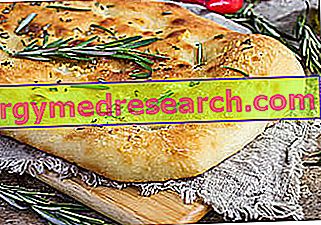
What is Jardiance - empagliflozin used for and what is it used for?
Jardiance is a diabetes medicine that contains the active substance empagliflozin . It is used in adults with type 2 diabetes to control the level of glucose (sugar) in the blood. Jardiance may only be used in patients with type 2 diabetes in which blood glucose levels are not satisfactorily controlled on diet and exercise alone and who cannot take metformin (another medicine for the diabetes). Jardiance can also be used as an "addition" to other diabetes medicines, including insulin, when these medicines, along with exercise and diet, do not provide adequate diabetes control.
How is Jardiance used - empagliflozin?
Jardiance is available in tablet form (10 and 25 mg) and can only be obtained with a prescription. The recommended starting dose is 10 mg once a day, which can be increased, if necessary, to 25 mg a day in suitable patients. If Jardiance is used in combination with insulin or medicines that stimulate the body's production of insulin, it may be necessary to reduce the dose to limit the risk of hypoglycaemia (low blood sugar levels). Because the effect of Jardiance depends on the functioning of the kidneys, treatment with this medicine is not recommended in some patients, for example those over 85 years of age or with moderate or severe renal impairment. For more information, see the package leaflet.
How does Jardiance - empagliflozin work?
Type 2 diabetes is a disease in which the body does not produce enough insulin to control the level of glucose in the blood, or where the body is unable to use insulin effectively. This causes high blood glucose levels. The active substance in Jardiance, empagliflozin, works by blocking a protein in the kidneys called sodium-glucose transporter 2 (SGLT2). SGLT2 is a protein that reabsorbs glucose from urine into the bloodstream during blood filtration in the kidneys. By blocking the action of SGLT2, Jardiance causes the elimination of more glucose through the urine, thus reducing blood glucose levels.
What benefit has Jardiance - empagliflozin shown during the studies?
A beneficial effect of Jardiance on blood glucose has been demonstrated in four main studies involving over 2, 700 patients. Jardiance 10 or 25 mg once a day was compared with placebo (a dummy treatment), either used alone or in addition to treatment with other medicines for diabetes (metformin, pioglitazone, or metformin plus pioglitazone or another type of medicine for diabetes called sulfonylurea). The main measure of effectiveness was the change in the blood level of a substance called glycosylated hemoglobin (HbA1c), which provides an indication of the effectiveness of blood glucose control after 24 weeks of treatment. All studies showed modest, but clinically significant, improvement of HbA1c with Jardiance over placebo: in the study that analyzed the use of Jardiance without other medicines, the reduction in HbA1c was 0.74% higher than placebo, with the dose of 10 mg, and 0.85% higher than the placebo, with the dose of 25 mg. Modest, but clinically significant, reductions in HbA1c were also observed when Jardiance was added to other medicines. Furthermore, the results indicate that treatment with Jardiance was associated with a beneficial reduction in body weight and blood pressure. Supporting evidence was provided by six other studies, some of which were a continuation of the main studies, which indicated that the drug's benefits continue with prolonged therapy. There has also been supportive evidence suggesting a benefit when the medicine has been associated with insulin.
What is the risk associated with Jardiance - empagliflozin?
The most common side effect of Jardiance (which may affect more than 1 in 10 people) is hypoglycaemia (low blood sugar), when the medicine is taken with a sulphonylurea or insulin. For the full list of all side effects reported with Jardiance and its limitations, see the package leaflet.
Why has Jardiance - empagliflozin been approved?
The Agency's Committee for Medicinal Products for Human Use (CHMP) decided that Jardiance's benefits are greater than its risks and recommended that it be approved for use in the EU. The CHMP concluded that Jardiance was effective in lowering blood glucose levels in patients with type 2 diabetes when it is given alone or in combination with other diabetes medicines with different mechanisms of action. Furthermore, beneficial reductions in weight and blood pressure have been observed in patients treated with Jardiance. However, the benefits of the medicine are reduced in patients with renal insufficiency and the CHMP recommended not to use the medicine in some patients, based on their renal function. Regarding safety, overall the undesirable effects were considered manageable.
What measures are being taken to ensure the safe and effective use of Jardiance - empagliflozin?
A risk management plan has been developed to ensure that Jardiance is used as safely as possible. Based on this plan, safety information has been included in the summary of product characteristics and the package leaflet for Jardiance, including the appropriate precautions to be followed by healthcare professionals and patients. Further information is available in the summary of the risk management plan.
More information on Jardiance - empagliflozin
On 22 May 2014, the European Commission issued a marketing authorization for Jardiance, valid throughout the European Union. For more information on Jardiance therapy, read the package leaflet (also part of the EPAR) or contact your doctor or pharmacist. Last update of this summary: 05-2014.



